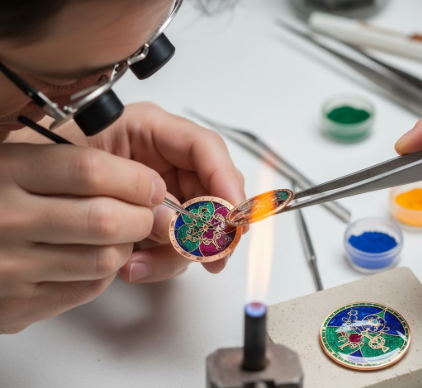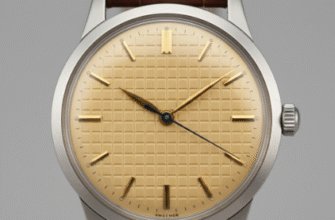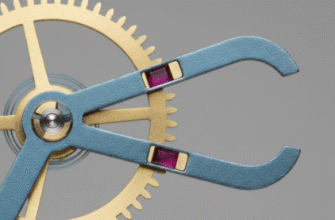In the rarefied world of haute horlogerie, the face of a watch is far more than a mere indicator of time; it is a canvas for artistry. While mechanical complexity often captures the spotlight, the creation of an artistic dial is a parallel universe of immense skill, patience, and tradition. Among the most revered and demanding of these decorative arts are the application of lacquer and the fiery ordeal of grand feu enameling. These are not simple decorative coatings but transformative processes, turning a simple metal disc into a work of art that can last for centuries.
The Deep Luster of Lacquer
When we speak of lacquer in fine watchmaking, we are almost always referring to the ancient Japanese art of
urushi. This is not the synthetic lacquer found in industrial applications but a natural, organic material derived from the sap of the
Toxicodendron vernicifluum tree, a relative of poison ivy native to East Asia. The sap itself is caustic and requires careful handling, but when cured, it transforms into a material of incredible hardness, durability, and a deep, soulful luster that no synthetic can replicate.
A Process of Patience
Creating a lacquer watch dial is an exercise in meditative patience, a process that can take many weeks, or even months, to complete. The journey begins with a meticulously prepared metal dial base, often crafted from gold. This base is cleaned and abraded to create a surface to which the first layer of lacquer can adhere.
The urushi master then begins the painstaking process of applying the lacquer. Using a special brush, often made from human hair, the artisan applies an incredibly thin, even layer of the viscous sap. This is where the magic and the difficulty begin. The entire process must take place in an environment that is almost surgically clean, as a single speck of dust can ruin the entire piece. Furthermore, urushi does not ‘dry’ in the conventional sense by evaporation. It cures through a chemical process of polymerization that requires a specific environment of high humidity (around 75-85%) and stable temperature (around 20-25°C). This happens in a special wooden cabinet called a
furo or
muro.
Urushi lacquer is a remarkably resilient natural polymer. Once fully cured, it is resistant to water, acids, alkalis, and alcohol, and can maintain its integrity and color for thousands of years. Some of the oldest known urushi artifacts date back over 9,000 years, testament to its extraordinary durability.
After the first layer has cured for a day or two, it is painstakingly polished. This is not a vigorous buffing but a delicate, wet polishing using materials like fine charcoal powder. The goal is to make the surface perfectly flat, removing any microscopic imperfections. Then, another layer is applied. And another. And another. A high-quality lacquer dial may have anywhere from a dozen to several dozen layers, each one applied, cured, and polished in the same meticulous fashion. This builds up the depth and richness of color that is the hallmark of fine lacquerware.
The Art of Maki-e
For decorative dials, the process is often elevated with the technique of
Maki-e, which translates to ‘sprinkled picture’. After applying a layer of lacquer, and while it is still wet, the artist uses fine bamboo tubes and delicate brushes to sprinkle incredibly fine metallic powders, such as gold, silver, or platinum, onto the surface to create a design. Different techniques exist:
- Hiramaki-e: The sprinkled powder is coated with clear lacquer and polished flat, creating a design that is flush with the surface.
- Takamaki-e: The design is built up in relief using a mixture of lacquer and charcoal or clay powder before the metallic powders are applied, creating a raised, three-dimensional effect.
- Togidashi Maki-e: After sprinkling the powders, the entire surface is covered with black lacquer. Once cured, it is carefully polished down with charcoal until the design underneath re-emerges, perfectly flush with the background, creating a sense of incredible depth.
Each step requires a master’s hand, as there is no room for error. A slight tremor or a miscalculation in timing can compromise the entire piece, forcing the artist to start over.
Grand Feu Enamel: Forged in Fire
If lacquer is an art of patience and organic chemistry, grand feu enamel is an art of fire, glass, and alchemy. The term
Grand Feu, French for ‘Great Fire’, refers to a specific and notoriously difficult enameling technique where the dial is fired in a kiln at extremely high temperatures, typically between 800°C and 900°C (1475°F to 1650°F).
The Trial by Fire
The process begins with a base dial, often made of copper or gold. The raw enamel, which is essentially colored glass made from silica mixed with various metal oxides, is ground into a fine powder using a pestle and mortar. This powder is then washed multiple times to remove any impurities. The artist mixes this powder with distilled water or oil to form a paste, which is then carefully applied to the dial’s surface. A layer of enamel, known as
contre-émail (counter-enamel), is also applied to the back of the dial. This is crucial for preventing the dial from warping or cracking under the immense stress of the heat.
Then comes the most perilous step. The dial is placed in the kiln. There are no modern thermometers here; the enameler relies solely on experience and the color of the glowing dial to judge the precise moment to remove it. A few seconds too long, and the colors can burn and change; a few seconds too short, and the enamel won’t fuse correctly. During this brief, intense firing, the powder melts, fuses, and bonds to the metal, creating a smooth, glassy layer.
The Grand Feu process is fraught with risk at every stage. The extreme thermal shock can cause the dial to crack, bubble, or develop dust inclusions at any point. The failure rate is exceptionally high, and even the most experienced masters can lose a piece in the final firing. This inherent difficulty is a major reason for the rarity and cost of true grand feu enamel dials.
This fiery ordeal is repeated for every single layer. For a simple white or black dial, this may mean 6 to 8 firings to achieve the desired depth and perfect surface. For a complex, multi-colored dial using the
champlevé (where cells are carved into the dial and filled with enamel) or
cloisonné (where fine gold wires form the cells) techniques, each color must be fired separately. Since different color oxides fuse at different temperatures, the artisan must fire the colors that require the highest heat first, working their way down. The risk of failure multiplies with every trip to the kiln.
The result, if successful, is a dial of breathtaking beauty. The colors are not painted on but are part of the glass itself. They will never fade or tarnish. The surface has a unique brilliance and depth that is impossible to achieve with any other method. It is a permanent, luminous piece of art, a testament to the artist who dared to master the great fire.









